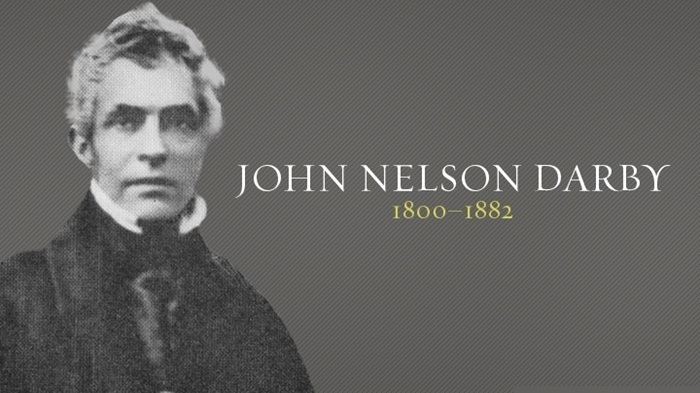Is the Rapture of the Church a Recent Invention of the American Church
Pre-Trib Rapture: The Earliest Eschatology
7/15/20252 min read


Did Darby Invent the Rapture? Recovering an Overlooked Hope of the Early Church
One of the most common criticisms against Dispensationalism is that it’s “too new” to be trusted. Specifically, the doctrine of the pretribulational rapture is often accused of being a 19th-century invention by John Nelson Darby. But is that really the case?
The short answer: No.
The longer answer? Let’s take a closer look—because the more you dig into history, the more you’ll see that Darby didn’t create the doctrine of the rapture; he helped recover something the early Church once held dearly and that later got lost in the shuffle of Church history.
What Did the Early Church Actually Believe?
If you go back to the first few centuries of the Church, you'll find that many early Christians believed in a literal, future return of Christ to reign on earth—a view called chiliasm, or historic premillennialism. Writers like Irenaeus, Justin Martyr, Lactantius, and Tertullian spoke clearly about a coming time of tribulation and a thousand-year reign of Christ afterward.
What’s often overlooked is that some early Christians also believed in a deliverance of the faithful before the wrath of God was poured out. For example:
The Shepherd of Hermas speaks of those who “escaped the great tribulation.”
The Epistle of Pseudo-Ephraem (4th century) famously declares: “All the saints and elect of God are gathered together before the tribulation, which is to come…”
While these early texts don’t offer a fully developed system like we see in modern Dispensationalism, the core ideas are there: a coming judgment, a literal reign of Christ, and a pre-judgment gathering of believers.
So What Happened?
Why did this futurist view fade?
The turning point came in the 4th and 5th centuries, when Church thinkers like Origen and Augustine began to spiritualize and allegorize biblical prophecy. Under Augustine’s influence, the Church shifted toward amillennialism—the belief that the “millennium” in Revelation is symbolic and happening now, through the Church itself.
This view eventually became dominant, especially in the Roman Catholic Church, and the earlier chiliastic view was either sidelined or outright condemned. For centuries, the idea of a literal reign of Christ—and especially a pretribulational rescue of the Church—was rarely heard in mainstream theology.
Rediscovering What Was Lost
Fast forward to the 1600s–1800s, and you’ll find a growing number of pastors, theologians, and Bible students in Europe and America beginning to return to a literal reading of prophecy. They started to see that the promises to Israel hadn’t been spiritually absorbed by the Church. They noticed clear distinctions between Israel and the Church, and they began once again to expect a literal return of Christ, a future tribulation, and the deliverance of believers beforehand.
Darby and the early Dispensationalists weren’t inventing something new—they were recovering a neglected eschatology grounded in Scripture and echoed by many in the early Church.
As historian William C. Watson documents in Dispensationalism Before Darby, there’s a long trail of pre-Darby theologians—stretching back to the Reformation and beyond—who affirmed beliefs very similar to today’s pretribulational view.
Conclusion: Not a Novelty, but a Recovery
The charge that the pretribulational rapture is a 19th-century novelty simply doesn’t hold up when examined historically. The early Church was premillennial, futurist, and expectant of God’s deliverance from coming wrath. That view was gradually overshadowed by allegorical interpretations but never completely disappeared.
So no, Darby didn’t invent the rapture—he helped bring it back into focus. And in doing so, he reminded the Church of a blessed hope that had long been part of its DNA.